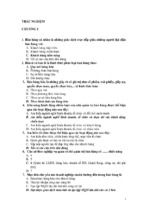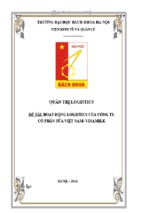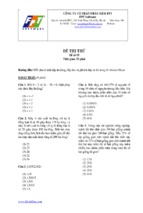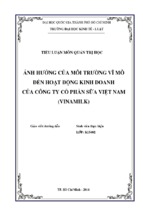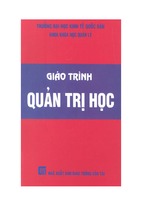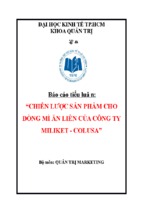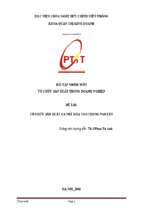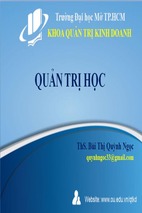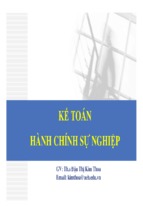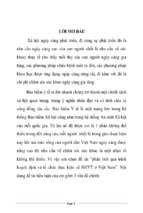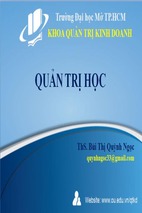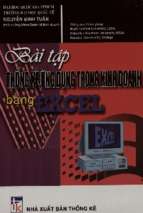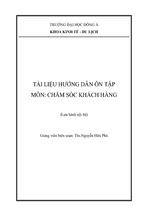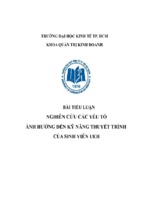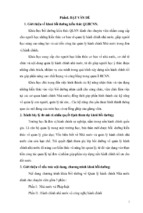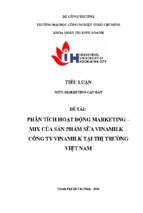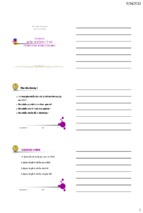MANAGEMENT TODAY
-for a better tomorrow
An International Journal of Management Studies
home page: www.mgmt2day.griet.ac.in
Vol.4, No.3, July-September 2014
Impact of Employer Branding and Applicants’ Intentions to Apply
Trupti A. Karkhanis
Associate Professor, IES Management College and Research Centre, ‘Vishwakarma’, Bandra Reclamation, Mumbai 400 050,
[email protected]
ARTICLE
INFO
Article history:
Received 21.08.2014
Accepted 30.09.2014
Keywords:
recruitment marketing;
employer branding;
intention to apply
A B S T R A C T
Employer branding is defined as “a targeted, long-term strategy to manage the awareness and perceptions of
employees, potential employees and related stakeholders with regards to particular firm” (Sullivan, 2004).
Often, we can observe that the applicants have got some image or perception in their mind regarding their
prospective employer. Hence it is very essential to match between these two. The present research attempts to
explore various dimensions of recruitment marketing offers that may result in the applicants’ intentions to
apply. The target audience for the study was graduate business school students who are about to enter the labour
market. Research was carried out in two phases to analyze qualitative and quantitative dimensions of the target
audience. In the first phase, three Focus Group Discussions (FGDs) were carried out with an average duration
of 70 minutes each. This qualitative data helped understanding various dimensions of the target audience and
in designing the questionnaire. In the second stage, a survey was conducted where total number of 250 students
was approached from which 220 responses were collected. The data analysis was done using SPSS for multidimensional scaling. Employer brand value proposition, company reputation and perceived job characteristics
were observed to impact the applicant’s intentions to apply.
Product branding considers how a product is represented to a
customer and corporate branding considers how the organization is
represented to the variety of external audiences, employer branding
considers current and potential employees as branding targets
(Edwards, 2010). Here while targeting the prospective employees
through employer branding exercise; it is essential to understand what
these prospective employees are looking for. Does ‘employer
branding’ attracts them? What are the intentions of these applicants
while applying for the job? Whether our offerings and matching with
their expectations.
Introduction
In service-dominant logic, the ultimate sources of value creation are
operant resources- the employees’ knowledge and skills employed on
operand resources to create differentiated and valued service in the
marketplace. Employees are the key in differentiating any market
offering and often interact with customers; differentiation should
ideally be approached with an eye on attracting the “right” and relating
employees to the “right” customer in the co-creation process
(Andreassen and Lanseng, 2010). Thus marketing of recruitment offers
to the ‘right’ kind of candidates is a key to the success of final product
or service. External marketing of employer brand is designed primarily
to attract the target population, but is also to support and enhance the
product or corporate brand (Backhaus, Tikoo, 2004).
Background
Swystun (2007) argues “a brand is a mixture of attributes, tangible
and intangibles, symbolized in a trademark, which if managed
properly, creates value and influence.” With employer branding this
concept is applied to an HR setting, where the branded product is
unique and particular employment experience. The employment
experience is explicitly offered to current and potential employees by
organizations that they make claim to provide a particular experience
(Edwards, 2010). Such offerings while doing the recruitment
marketing should be attractive enough so as to make the ‘right’
candidate apply. Employer branding is defined as “a targeted, longterm strategy to manage the awareness and perceptions of employees,
-----------------------------------------------------------------------------------------------------
Responsibility of Contents of this paper rests upon the authors and
not upon GRIET publications
ISSN: 2348-3989 (Online)
ISSN: 2230-9764 (Print)
Doi: http://dx.doi.org/10.11127/gmt.2014.09.01
pp.1-5
Copyright@GRIET Publications. All rights reserved.
1
Impact of Employer Branding and Applicants’ Intentions to Apply
potential employees and related stakeholders with regards to particular
firm” (Sullivan, 2004). Often, we can observe that the applicants have
got some image or perception in their mind regarding their prospective
employer. Hence it is very essential to match between these two. The
present research attempts to explore various dimensions of recruitment
marketing offers that may result in the applicants’ intentions to apply.
attraction literature (Gomes and Neves, 2011). The present research
attempts to answer some of these gaps.
Methodology
The target audience for the study was graduate business school
students who are about to enter the labour market. Research was
carried out in two phases to analyze qualitative and quantitative
dimensions of the target audience. In the first phase, three Focus Group
Discussions (FGDs) were carried out with an average duration of 70
minutes each. This qualitative data helped understanding various
dimensions of the target audience and in designing the questionnaire.
In the second stage, a survey was conducted where total number of 250
students was approached from which 220 responses were collected.
The data analysis was done using SPSS using exploratory factor
analysis.
Little conceptualization exists beyond borrowing models from
consumer research in the area of employer branding and managing
recruitment marketing offers. Empirical studies trying to explain how
employees evaluate potential employers are fragmented in focus
(Andreassen and Lanseng, 2010). Lievens and Highhouse (2003)
found that prospective employee’ perceptions of instrumental (e.g.
pay, job security, and location) as well as symbolic (e.g. sincerity,
innovativeness and prestige) attributes were positively related to an
organization’s attractiveness as employer. Various other researches
analyze the factors impacting the applicant’s intentions to apply on the
one hand and employer attractiveness on the other hand in a
fragmented manner.
Analysis and Findings
i. Qualitative study:
Since there was no established scale available to analyze the
impact of employer branding on the applicant’s intentions to apply,
extensive FGDs were conducted to capture the underlying dimensions.
The result of the three FGDs was greater understanding of the target
audience’s response. FGDs were conducted with the students of the
graduating batch from various B-schools from across the country.
These were the students appearing for their final placements and were
about to join the job market. Equal proportion of male and female
candidates was selected.
Literature Review
The few existing studies can be broadly divided into two categories
– effects of job and organization characteristics varying in level of
abstraction and effects of fit between employees and organization. In
addition to that, there are various attributes discussed in the prior
researches that can explain employer attractiveness. Organizational
attraction refers to the way employers strategically attempt to exploit
their strengths in order to attract applicants (Gomes and Neves, 2011).
They have investigated whether perceptions of organizational
attractiveness mediate the path between applicant evaluation of a job
vacancy and the intention to apply for the job. Intention to apply for a
job vacancy is a strong predictor of behavior in the attraction stage of
recruitment (Barber and Roehling, 1993), and is critical for
understanding applicant job choice (Gomes and Neves, 2011).
Drawing on brand equity literature (Keller, 1993), Backhaus and Tikoo
(2004) theorized that functional job attributes (objective, tangible jobrelated features like salary and leave allowances) and symbolic ones
(non-product-related features like prestige and social approval)
combined with the benefits they provide to employees are positively
related to employer attractiveness.
From FGDs it was observed that the company’s brand image and
perceived job characteristics were significant factors. In addition to
these characteristics, some respondents emphasized on the employer’s
attributes like socially responsible, well known in the market. By and
large the respondents were carrying clear idea about their prospective
employer. Many of them were engaged in doing good amount of
homework before applying for any job. Some group members also laid
down emphasis on the social responsibility aspect of the companies.
Some of the demographic factors like gender, parents’ occupation were
found to be influential.
ii. Quantitative study:
Some authors argue that an employer branding programme will
involve clarifying what is referred to as the “unique organizational
value proposition” (Knox et al., 2000). The presentation of the
“package” of reward features or employment advantages and benefits
offered to employees will go some way to presenting this and the
presentation of organizational values, characteristics and attributes will
also help clarify the employer brand value proposition (Edwards,
2010).
The practice of employer branding is predicted on the assumption
that human capital bring value to the firm, and through skillful
investment in human capital, firm performance can be enhanced
(Backhaus, Tikoo, 2004). Prior researches have laid lot of emphasis on
the importance of employer branding in attracting best talent for the
company that would contribute to the overall growth. With this view
in consideration, a questionnaire was prepared based on the feedback
from the FGDs. 23 items were selected for the data collection on the
five point Likert scale from ‘strongly agree’ to ‘strongly disagree’ in
addition to few demographic questions. Exploratory factor analysis
was used for data analysis in order to derive various psychographic
dimensions.
Cable and Turban (2003) showed the importance of the company
reputation in increasing likelihood of potential applicants applying for
the job at the organization.
Collins and Stevens (2002) assessed students’ ratings of how
favourable they were towards particular organizations and their
intentions to apply for the job at these organizations. They showed that
students tended to have more favourable attitudes towards
organizations that were seen to sponsor events at their university and
organizations that have generally higher perceived corporate profile.
Chronbach’s alpha (0.91) indicated the high reliability of the
questionnaire.
Though research has investigated variety of applicant intentions in
the attraction stage, the factors predicting intention to apply for job
vacancy remains an important and open question in the organizational
2
Management Today
Vol.4, No.3
July-September 2014
Table-1: Reliability Statistics
Table-2: KMO and Bartlett's Test
Cronbach’s
Alpha
Cronbach’s Alpha Based on
Standardised Items
.910
.916
Kaiser-Meyer-Olkin Measure of Sampling Adequacy
Bartlett’s Test of Sphericity
Approx. Chi-Square
df
Sig.
N of
Items
23
.779
3.635E3
253
.000
With the initial factor extraction using principal component
method, six factors were found to be explaining 72.66% of variance.
Taking these six factors, the factor analysis was done once again to
understand the variable classification and categorization.
Results of factor analysis helped in analyzing the underlying
dimensions of applicants’ behavior in terms of how they give
importance to various aspects of employer branding. KMO value for
the factor analysis was 0.779 along with the acceptable level of
significance.
Table-3: Total Variance Explained
Component
Initial Eigenvalues
Extraction Sums of Squared Loadings
Rotation Sums of Squared Loadings
Total
% of
Variance
Cumulative
%
Total
% of
Variance
Cumulative
%
Total
% of
Variance
Cumulative
%
1
8.685
37.761
37.761
8.685
37.761
37.761
4.754
20.671
20.671
2
2.818
12.253
50.013
2.818
12.253
50.013
2.873
12.491
33.162
3
1.531
6.656
56.670
1.531
6.656
56.670
2.660
11.565
44.727
4
1.354
5.888
62.557
1.354
5.888
62.557
2.389
10.387
55.114
5
1.261
5.483
68.040
1.261
5.483
68.040
2.092
9.094
64.208
6
1.062
4.619
72.660
1.062
4.619
72.660
1.944
8.452
72.660
7
.853
3.710
76.370
8
.804
3.495
79.865
9
.680
2.954
82.819
10
.621
2.699
85.518
11
.526
2.287
87.805
12
.451
1.961
89.767
13
.438
1.905
91.672
14
.366
1.590
93.262
15
.317
1.378
94.640
16
.266
1.156
95.796
17
.212
.920
96.715
18
.190
.827
97.542
19
.169
.733
98.275
20
.146
.634
98.910
21
.115
.499
99.408
22
.082
.357
99.765
23
.054
.235
100.000
Note: Extraction Method: Principal Component Analysis
Factor analysis of the six factors gave the following categorization.
3
Impact of Employer Branding and Applicants’ Intentions to Apply
Table-4: Rotated Component Matrix a
While applying for the job…
I look for good work culture
I look for motivated staff where I will work
I look for training and development opportunities while on the job
My employee should be trustworthy in the eyes of customers
My employee should be socially responsible
Innovations should be encouraged in the company where I will work
I believe in loyalty towards organisation where I will work
My employee/organisation should be unique in terms of overall work experience
I look for career growth opportunities
I do good homework about the company when I intend to apply for the job
I thoroughly go through the website of the company before applying for the specific job
I have a clear idea about how my employee / organisation should be
I have clear ideas about my ‘dream company’ where I would like to work
I look for the company with well-known brand name
I look for company which has high regards in the market
While applying for the job I look forward for reputed organisation
I believe in frequently changing jobs for career growth
I intend to stick to the company for long period of time once I am employed
I look for the job advertisement where I can relate myself with the company
I look for higher pay package
I apply for those companies where in think that I will be right fit
I would apply for the company with which I can associate
I go through testimonies of the current employees where I am going to apply
I look for the job advertisement where I can relate myself with the company
I look for higher pay package
1
.809
.773
.769
.693
.669
.618
.583
.579
.497
.300
.257
.145
.091
.209
.094
.414
-.030
.257
-.098
.355
.153
.143
.151
-.098
.355
2
.265
.361
.289
-.063
.000
.271
.215
-.083
.337
.790
.723
.671
.527
.191
.177
.298
.021
.139
.083
.303
.226
.358
.123
.083
.303
Component
3
4
.106
.001
-.020 -.024
.179
.134
.211
.389
.081
.183
.164
.065
.373
.520
.000
-.191
.400
.023
.105
.106
.287
-.008
.121
-.059
.335
.108
.849
.021
.699
-.204
.565
.339
.161
-.851
.171
.722
.455
-.504
.360
-.405
.226
.158
.150
-.038
.073
-.026
.455
-.504
.360
-.405
5
-.034
-.076
.084
.215
.421
.291
.032
.448
.246
.238
.142
.219
.073
.197
.267
-.072
-.030
.137
.188
.048
.785
.766
.038
.188
.048
6
.064
.352
-.048
.042
-.005
.372
.162
.337
-.154
.200
-.118
.416
.459
.006
.344
.180
.246
.201
Note:
1.
2.
3.
Extraction Method: Principal Component Analysis.
Rotation Method: Varimax with Kaiser Normalization.
a Rotation converged in 9 iterations.
With the help of the variables coming under each of the factors we
can indicate the following reasoning:
researchers suggest that organizational or corporate image influences
how prospective employees evaluate prospective employers (Ambler
and Barrow, 1996; Backhaus and Tikoo, 2004; Balmer and Greyser,
2002; Lievens et al., 2007). According to the theorizing of Backhaus
and Tikoo (2004), image is an amalgamation of perceptions about
functional and symbolic attributes and benefits. Specifically, image is
thought of as an outcome of certain job and organizational
characteristics, mediating their effect on employer attraction.
1. Employee value proposition: This emerged as a major factor
that attracts the potential employees. The value proposition would
include the organization level attributes like work culture, level of
motivation, encouragement to training and development and various
other organization related aspects. Thus it will be beneficial for the
company to build its brand and brand communication around these
attributes.
4. Job attributes: Job and organizational characteristics have been
proposed as a source of variables to explain prospective employees’
attitudinal judgments about an organization as potential employer.
Lievens and Highhouse (2003) found that prospective employee’
perceptions of instrumental (e.g. pay, job security, and location) as
well as symbolic (e.g. sincerity, innovativeness, and prestige)
attributes were positively related to an organization’s attractiveness as
employer. Cable and Turban (2003) reported that prospective
employees’ beliefs about job attributes (e.g. promotion opportunities,
future salary, and work challenges) positively influenced their job
pursuit intentions.
2. Image congruence: According to Anderson and Lang (2010),
the higher congruency a prospective employee perceives between
her/his ideal image and a company’s image, the more likely it is that
this employee will have a positive attitude towards seeking
employment with that company. Image congruency gets reflected in
the clear idea about the ‘dream company’ where the potential
employee is seeking employment. This would come from the thorough
homework about the company from various sources of information
including web portals, newspaper as well as from friends and peer
group.
5. Association: Association is a concept close to the ‘image
congruency’ from the literature review. Here the prospective employee
looks for the association with the company that he/she is intending to
apply. This association may be based on the candidate’s self-image as
well as image of the company.
3. Company image and reputation: The company’s image helps
attract employees because they identify with the brand and their
perception of other employees working there (Anderson, Lang 2010).
If a prospective employee is attracted to a company due to its corporate
image, that employee is likely to internalize the corporate image and
become motivated to project it to customers and (Sirgy, 1982; Sirgy et
al., 1997) other stakeholders. On a more abstract level, some
6. Social influence: Social influence is also one of the important
dimensions in the applicant’s behavior and intention to apply. This can
4
Management Today
Vol.4, No.3
come from the fact that the decision to apply for the company is
influenced by the testimonies of the existing employees.
July-September 2014
Berthon, P. Ewing, M. and Hah, L. L. (2005). Captivating company:
dimensions of attractiveness in employer branding. International
journal of Advertising, Vol.24, No.2, 151-72.
Implications
Cable, D. M. and Graham, M. (2000). The determinants of
organizational reputation: a job search perspective. Journal of
Organizational Behavior, Vol.21, 929-47.
Firms appear to be expending considerable resources on employer
branding campaigns, indicating that they are finding value in practice
(Backhaus, Tikoo, 2004). The research served two-way purpose. First,
it helped in developing the scale for measuring the impact of
recruitment marketing on the intentions to apply. It also helped in the
overall understanding of the employer branding and its underlying
dimensions. Second, it identified the distinctive preference pattern
among the students who are about to enter the job market in terms of
the demographics and psychographics. The ‘intentions to apply’ were
observed to differ significantly based on the psychographic profile.
Cable, D. M. and Turban, D. B. (2001). Establishing the dimensions,
sources and value of job seekers employer knowledge during
recruitment. in Ferris, G.R. (Ed.), Research in Personnel and
Human Resource Management, Elsevier Science, New York, NY,
pp. 115-63.
Cable, D. M. and Turban, D. B. (2003). The value of organizational
image in the recruitment context: a brand equity perspective.
Journal of Applied Social Psychology, Vol.33, 2244-66.
A key finding from the research work in the area is that potential
recruits are more likely to apply for a job at a particular organization
that has existing positive company reputation. The greater a company’s
reputation, the more attractive it tends to be seen by potential recruits
(Edwards, 2010). An example of such research is a study by Cable and
Graham (2000), which investigated factors predicting job seekers
perceptions of an organizations’ reputation. In research on employer
“brands” Ambler and Barrow (1996) have shown the importance of
recruitment outcomes of the image of the organization as an employer.
Collins, C. J. and Stevens, C. K. (2002). The relationship between early
recruitment-related activities and the application decisions of new
labour-market entrants: a brand equity approach to recruitment.
Journal of Applied Psychology, Vol. 87, 1121-33.
Edwards, M. R. (2010). An integrative review of employer branding
and OB theory. Personnel Review, Vol.39, No.1, 5-23.
Gomes, D. and Neves, J. (2011). Organizational attractiveness and
prospective applicants’ intentions to apply. Personnel Review,
Vol.40, No.6, 684-699.
Other research has called attention to organizational reputation
(Cable and Turban, 2001), which refers to public and social evaluation
of an organization, and has also been related to attractiveness (Turban
and Greening, 1997).
Keller, K. L. (1993). Conceptualizing, measuring, and managing
customer based equity. Journal of Marketing, Vol.57, No. 1, 1-22.
The present research outcomes are helpful for the academicians to
carry out further research in the area of employer branding. It is also
useful for the practitioners for understanding the impact of recruitment
marketing offers on the applicants’ intentions to apply. Employer
brand value proposition, company reputation and perceived job
characteristics impact the applicant’s intentions to apply. Intended to
be a true representation of what the firm offers to its employees, the
value proposition provides a central message that is conveyed by the
brand (Eisenberg et al., 2001). Further research can be carried out to
find the association between recruitment marketing offers and job
search behavior in case of those who are presently working.
Knox, S. D., Maklan, S. and Thompson, K. E. (2000). Building the
unique organization value proposition. in Schultz, M., Hatch, M.J.
and Larsen, M.H. (Eds), The Expressive Organization, Oxford
University Press, Oxford, p. 216.
Lievens, F. and Highhouse, S. (2003). The relation of instrumental and
symbolic attributes to company’s attractiveness as an employer.
Personnel Psychology, Vol.56, No.1, 75-102.
Lievens, F., Van Hoye, G. and Anseel, F. (2007). Organizational
Identity and employer image: Towards a unifying framework.
British Journal of Management, Vol. 18, S1, 45-59.
Our study has some limitations which must be addressed. First, we
use a student sample. This issue is pointed out in several articles.
Despite being aware of this we decided on a student sample because
students were getting close to situation in which they would have to
make choices regarding an employer. Further studies should include
other respondents, particularly people already employed from different
age groups.
Robertson, Q., Collins, C. and Oreg, S. (2005). The effects of
recruitment message specificity on applicant attraction to
organization. Journal of Business and Psychology, Vol.19, 319-39.
Sirgy, M. J. (1982). Self-concept in consumer behavior and consumer
decision making. Journal of Consumer Research, Vol. 9, No.3,
287-300.
Bibliography
Sirgy, M. J., Grewal, D., Magleburg, T. F., Park, J. O., Chon, K. S.,
Claiborne, C. B., Johar, J. S. and Berkman, H. (1997). Assessing
the predictive validity of two methods of measuring Self-image
congruence. Journal of Academy of Marketing Science, Vol.25,
No.3, 119-41.
Amber, T. and Barrow, S. (1996). The employer brand. Journal of
Brand Management, Vol. 4, 185-206.
Backhaus, K. and Tikoo, S. (2004). Conceptualizing and researching
employer branding. Career Development International, Vol. 9, No.
5, 501-17.
Swystun, J. (2007). The brand glossary. Interbrand, Palgrave
Macmillan, New York, NY.
Balmer, J. M. T. and Greyser, S. A. (2002). Managing the multiple
identities of the corporation. California Management Review, Vol.
44, No. 3, 72-86.
Turban, D. B. and Greening, D. W. (1997). Corporate social
performance and organizational attractiveness to prospective
employees. Academy of Management Journal, Vol.40, 658-72.
5

